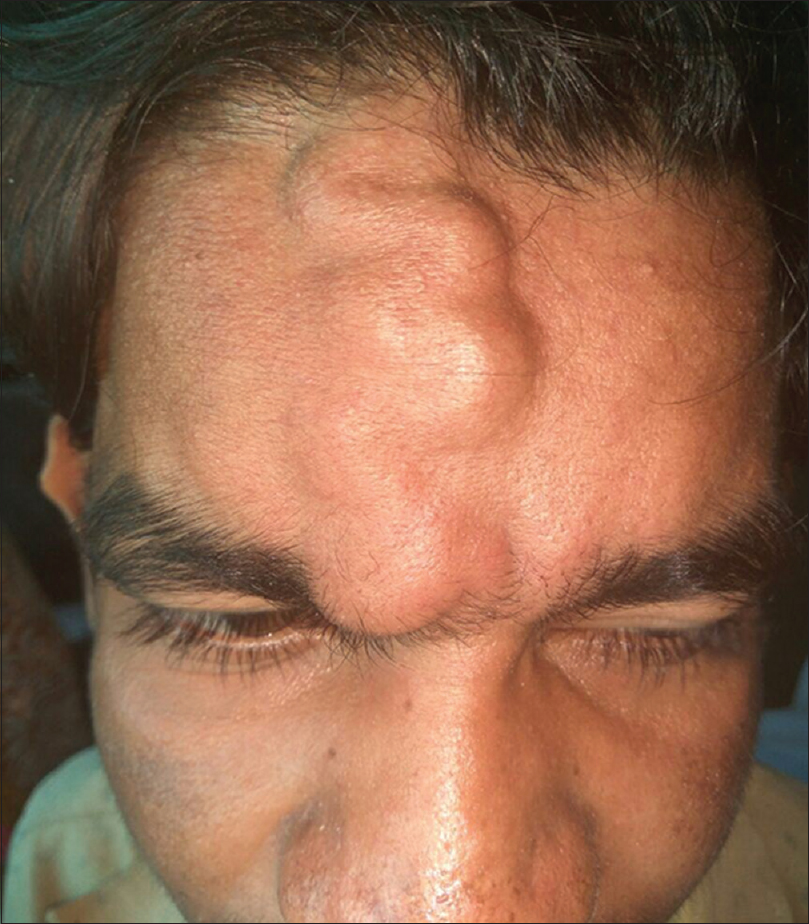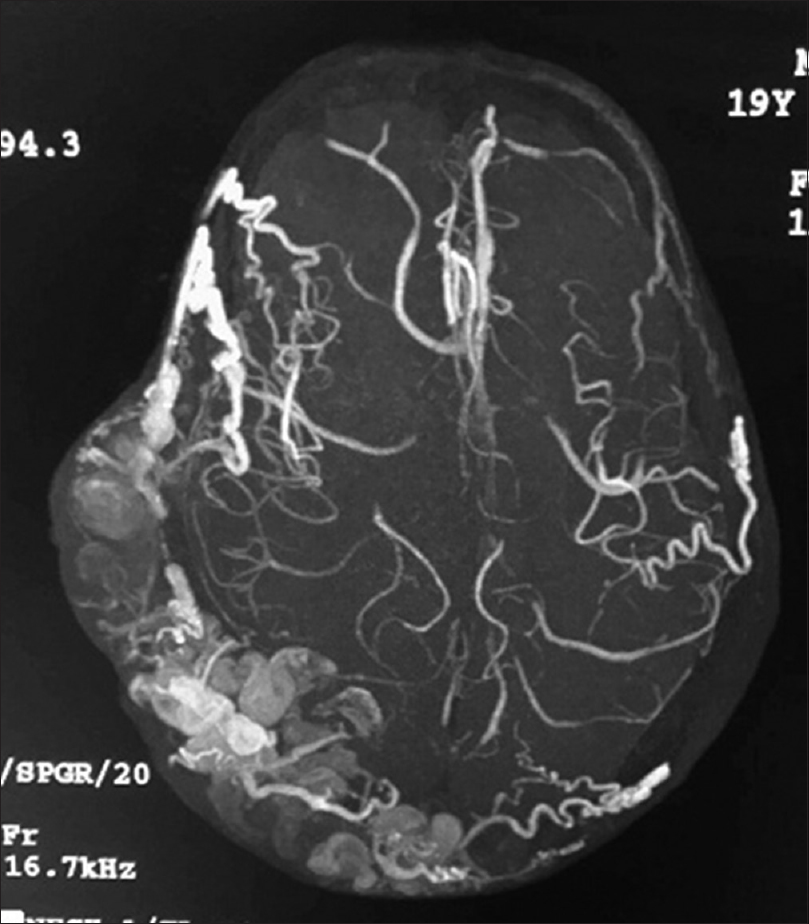Translate this page into:
Cirsoid aneurysm of scalp
Correspondence Address:
Geeta Kiran Arakkal
Department of Dermatology, Venereology and Leprosy, MNR Medical College and Hospital, Sangareddy - 502 294, Telangana
India
| How to cite this article: Varala S, Arakkal GK, Malkud S, Narayana B. Cirsoid aneurysm of scalp. Indian J Dermatol Venereol Leprol 2018;84:57-58 |
A 19-year-old male presented with asymptomatic swellings over the scalp and face since 1 year of age. On cutaneous examination, there were two well-defined cystic, pulsatile swellings over the right parietal region of the scalp and forehead [Figure - 1] with bruit on auscultation. Magnetic resonance angiography showed multiple serpiginous flow voids and hyperintensities in the subcutaneous plane of scalp involving the right parieto-occipital and frontal regions with arterial feeders from the right middle meningeal artery and occipital branch of the right external carotid artery [Figure - 2] suggestive of arteriovenous malformation (Cirsoid aneurysms are arteriovenous malformation of scalp which can be congenital or occur following trauma. Common manifestations of cerebral arteriovenous malformation are subcutaneous pulsatile swellings, headache, seizures, muscular weakness, numbness, loss of vision and difficulty in speaking depending on the site of involvement in the brain. Cerebral hemorrhages are dangerous complications of AVMs. Magnetic resonance angiography is the gold standard for diagnosis. Treatment options include surgical removal of nidus and palliative embolization.
 |
| Figure 1: Engorged tortuous swelling over right frontal region clinically suggestive of arteriovenous malformation |
 |
| Figure 2: Coronal magnetic resonance angiography showing right fronto-parieto-occipital lesions in the soft tissues of the scalp with tortuous hyperintensity signals suggestive of venous component and intermediate signal intensity suggestive of arterial component. Intracranial vascular communication noted with middle meningeal artery branches at parietal region |
Acknowledgment
We thank Dr. Bhaskarnarayana K, Professor and HOD, Department of Dermatology, MNR Medical College and Hospital for his continuous support and guidance.
Declaration of patient consent
The authors certify that they have obtained all appropriate patient consent forms. In the form, the patient has given his consent for his images and other clinical information to be reported in the journal. The patient understand that name and initials will not be published and due efforts will be made to conceal identity, but anonymity cannot be guaranteed.
Financial support and sponsorship
Nil.
Conflicts of interest
There are no conflicts of interest.
Fulltext Views
6,447
PDF downloads
2,952





